Historic sites
Discover all the historic sites of the Second World War on the different routes.
Departure/Arrival Bayeux
A miraculous town, Bayeux is steeped in history. Normandy, a former Viking country at the heart of the Anglo-Norman War, was the scene of one of the largest military operations ever launched. Many towns still bear the scars of the fighting, and some were even wiped off the map after Allied bombing raids. However, some towns were spared, such as the miraculous Bayeux. Today it is a charming town that is home to the Bayeux Tapestry, a museum on the Battle of Normandy and one of the largest Commonwealth war cemeteries. Here lie 4144 Commonwealth soldiers, including 308 unknown soldiers. The cemetery is also home to 505 soldiers from other nationalities (Germans, Poles, Spaniards, Italians, etc.).
Bayeux British Cemetery will be the starting and finishing point for all the guided visits:
- Full day D-Day Visit
- Half day D-Day Visits
- Full day D-Day Visit
- Half day D-Day Visits
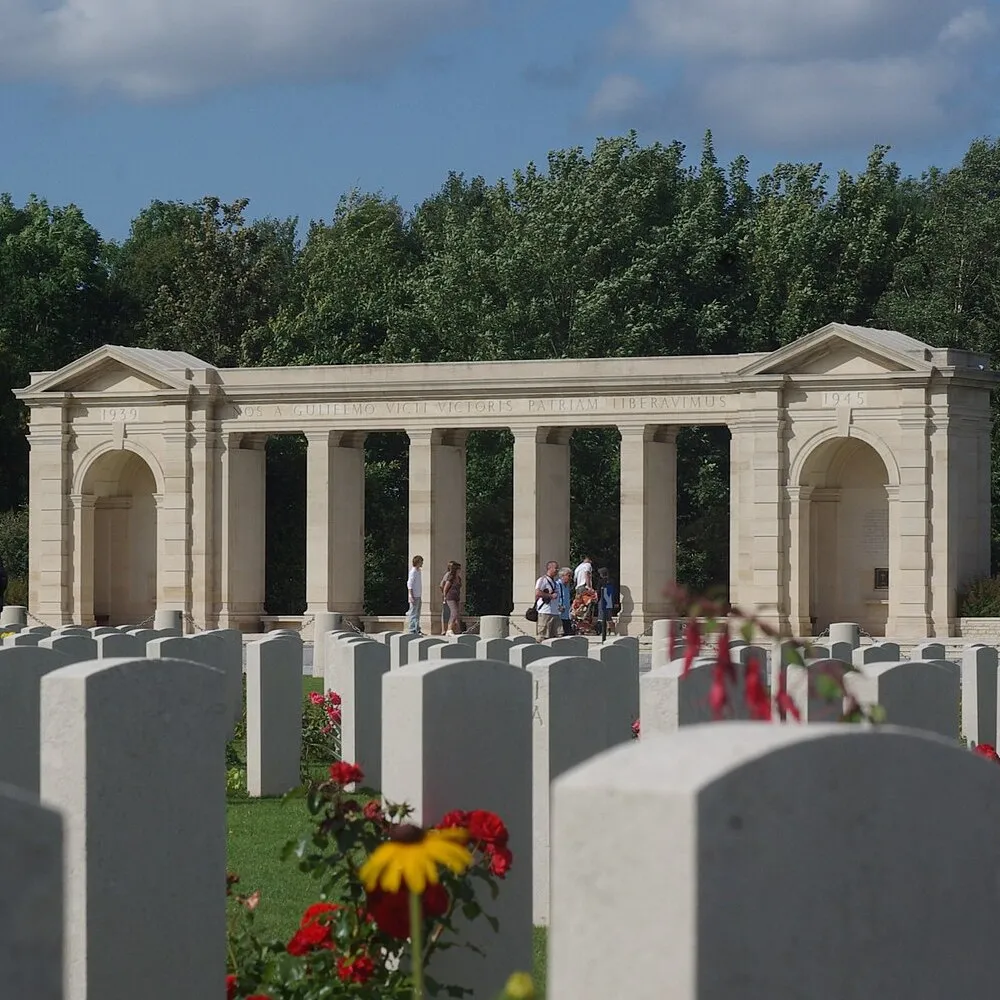
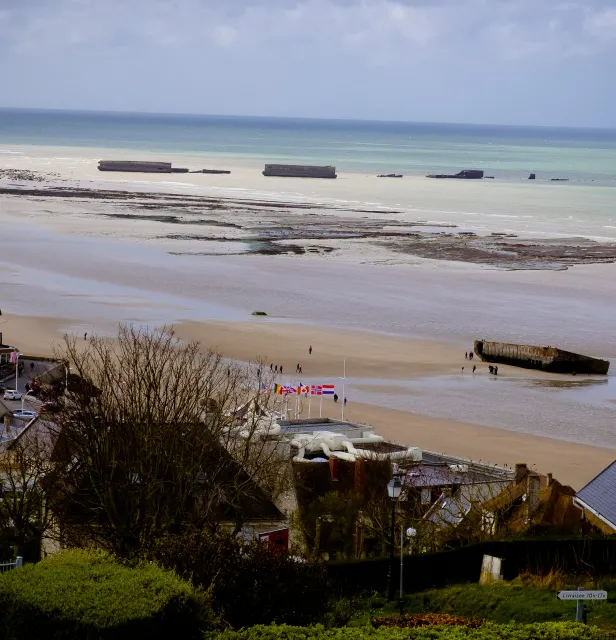
Find out more about Artificial Ports
In times of war, human beings have to adapt.
This has often given rise to ingenious new inventions.
Such is the case with artificial ports. Like every element of Operation ‘OVERLORD’, they had a code name: ‘Mulberry A’ for the Americans on Omaha beach and ‘Mulberry B’ for the British on Gold beach.
Today, nothing remains of the American artificial harbour. We can, however, still see the ‘phoenix’ boxes on the heights of Arromanches-les-Bains, which formed the sea wall.
This has often given rise to ingenious new inventions.
Such is the case with artificial ports. Like every element of Operation ‘OVERLORD’, they had a code name: ‘Mulberry A’ for the Americans on Omaha beach and ‘Mulberry B’ for the British on Gold beach.
Today, nothing remains of the American artificial harbour. We can, however, still see the ‘phoenix’ boxes on the heights of Arromanches-les-Bains, which formed the sea wall.
If you would like to see the remains of the artificial harbour, book the visit:
- Full day D-Day Visit
- Full day D-Day Visit
Explore the German battery at Longues-sur-Mer
It’s sometimes hard to imagine what happened on 6 June 1944, even when you’re actually there.
Nature has reclaimed its rights over and the concrete stands the test of time.
Located in the British sector of "Gold", the German battery at Longues-sur-Mer is one of the best preserved.
In the days leading up to Operation "Neptune", no less than 700 tonnes of bombs fell on the battery.
Nevertheless, the guns were intact. Even today, this is one of the few batteries where you can still see the guns in their pillboxes.
Nature has reclaimed its rights over and the concrete stands the test of time.
Located in the British sector of "Gold", the German battery at Longues-sur-Mer is one of the best preserved.
In the days leading up to Operation "Neptune", no less than 700 tonnes of bombs fell on the battery.
Nevertheless, the guns were intact. Even today, this is one of the few batteries where you can still see the guns in their pillboxes.
If you would like to explore the German battery and its cannons, book:
- Full day D-Day Visit
- Half day D-Day Visits
- Full day D-Day Visit
- Half day D-Day Visits
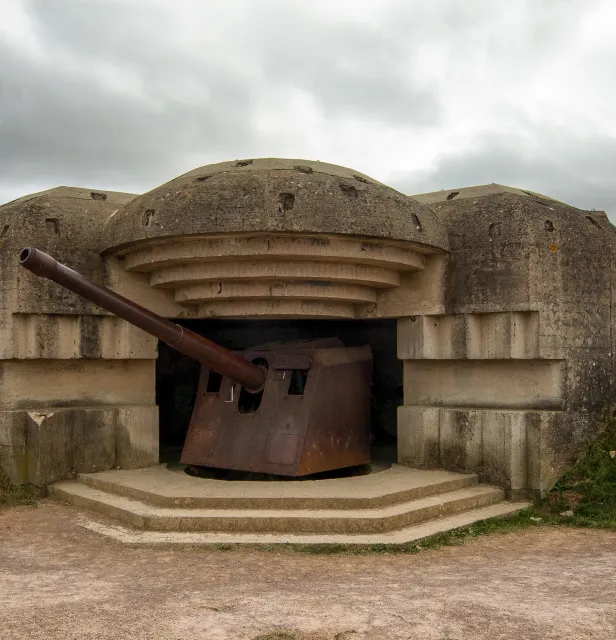
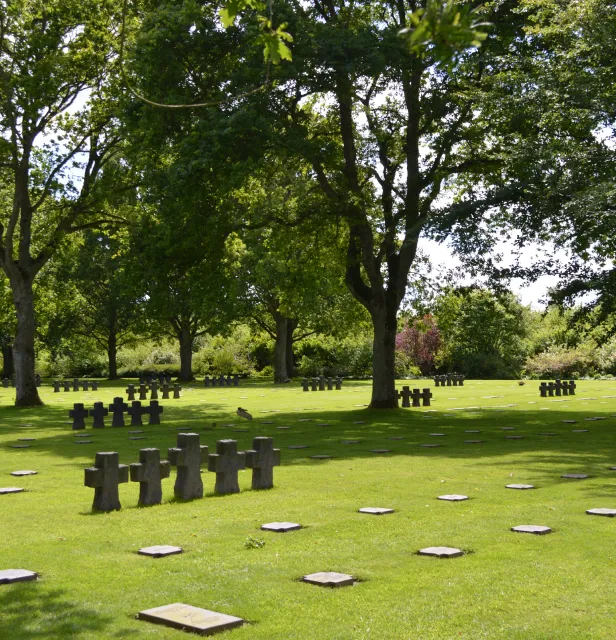
Discover the German cemetery at La Cambe
Inaugurated on 21 September 1961, 21,222 German soldiers who fell between 6 June and 20 August 1944 are buried here.
It is the Normandy military cemetery with the most graves, yet it is not the largest.
Each grave is an exhortation to peace. Most of them are very young soldiers under the age of 20.
You can also walk among the 1,220 maple trees planted in the Peace Garden to symbolise peace and reconciliation between peoples.
It is very interesting to be able to compare the German, American and British military cemeteries…
It is the Normandy military cemetery with the most graves, yet it is not the largest.
Each grave is an exhortation to peace. Most of them are very young soldiers under the age of 20.
You can also walk among the 1,220 maple trees planted in the Peace Garden to symbolise peace and reconciliation between peoples.
It is very interesting to be able to compare the German, American and British military cemeteries…
If you would like to explore the German battery and its cannons, book the:
- Half day D-Day Visits
- Half day D-Day Visits
Relive the Rangers’ assault on Pointe du Hoc
Pointe du Hoc was an integral part of the Atlantic Wall.
The German battery on the cliff housed 6 guns.
The 20 km range represented a direct threat to the two beaches in the American sector, ‘Utah’ and ‘Omaha’.
Before Operation 'Neptune' was launched, the Americans had to ensure that their landing crafts would not be threatened by the guns at Pointe du Hoc.
To do this, they sent Rangers to the site.
The German battery on the cliff housed 6 guns.
The 20 km range represented a direct threat to the two beaches in the American sector, ‘Utah’ and ‘Omaha’.
Before Operation 'Neptune' was launched, the Americans had to ensure that their landing crafts would not be threatened by the guns at Pointe du Hoc.
To do this, they sent Rangers to the site.
If you’d like to relive the Rangers’ assault on Pointe du Hoc, book the:
- Full day D-Day Visit
- Full day D-Day Visit


Follow in the footsteps of the soldiers on Omaha Beach
Nicknamed ‘Bloody Omaha’, this beach in the American sector was the scene of the deadliest assault in the early hours of 6 June 1944.
The topography of this beach is unusual in that it is overlooked by vast hills.
These hills were heavily defended by cannons, mortar bombs and machine guns. What’s more, the sand does not form a flat surface but rather sandbanks…
Nothing went according to plan: the weather conditions were not good, the currents were not favourable and the bombing raids had failed.
The debacle lasted all day. It wasn’t until nightfall that the beach was reclaimed by the Americans.
The topography of this beach is unusual in that it is overlooked by vast hills.
These hills were heavily defended by cannons, mortar bombs and machine guns. What’s more, the sand does not form a flat surface but rather sandbanks…
Nothing went according to plan: the weather conditions were not good, the currents were not favourable and the bombing raids had failed.
The debacle lasted all day. It wasn’t until nightfall that the beach was reclaimed by the Americans.
If you would like to hear the story of the assault on Omaha Beach, book one of the following visits:
- Full day D-Day Visit
- Half day D-Day Visits
- Full day D-Day Visit
- Half day D-Day Visits
Visit the American Cemetery
Conceded in perpetuity in the United States, the Colleville-sur-Mer American Cemetery overlooks Omaha Beach.
Here lie almost 10,000 soldiers who fell in the Battle of Normandy.
American families were the only ones offered the repatriation of their loved ones’ bodies.
In the end, almost 70% of American families chose to have their soldiers who fell in France buried in the United States.
This military cemetery is an invitation to mourn.
Behind each marble cross, there is a shattered destiny, a shattered family.
Telling their stories gives us a better understanding of the human toll.
Here lie almost 10,000 soldiers who fell in the Battle of Normandy.
American families were the only ones offered the repatriation of their loved ones’ bodies.
In the end, almost 70% of American families chose to have their soldiers who fell in France buried in the United States.
This military cemetery is an invitation to mourn.
Behind each marble cross, there is a shattered destiny, a shattered family.
Telling their stories gives us a better understanding of the human toll.
If you would like to visit the American cemetery, you can book:
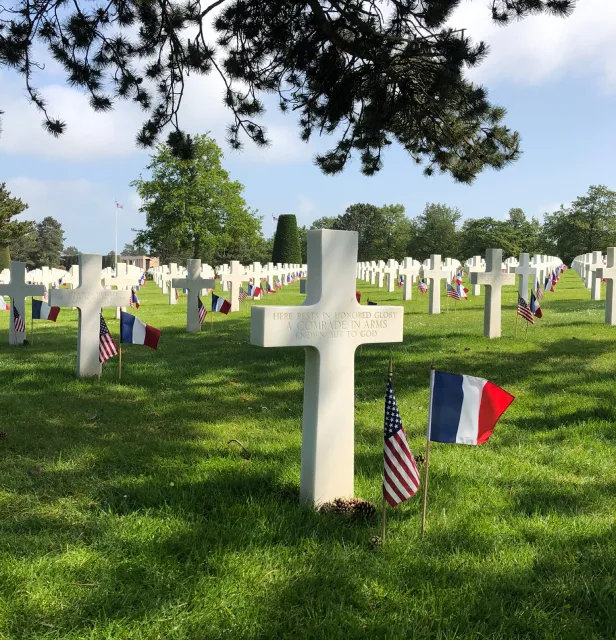
Are you ready to be transported into the D-Day experience?
Book the tour of your choice now.
Let’s go! Find out more
